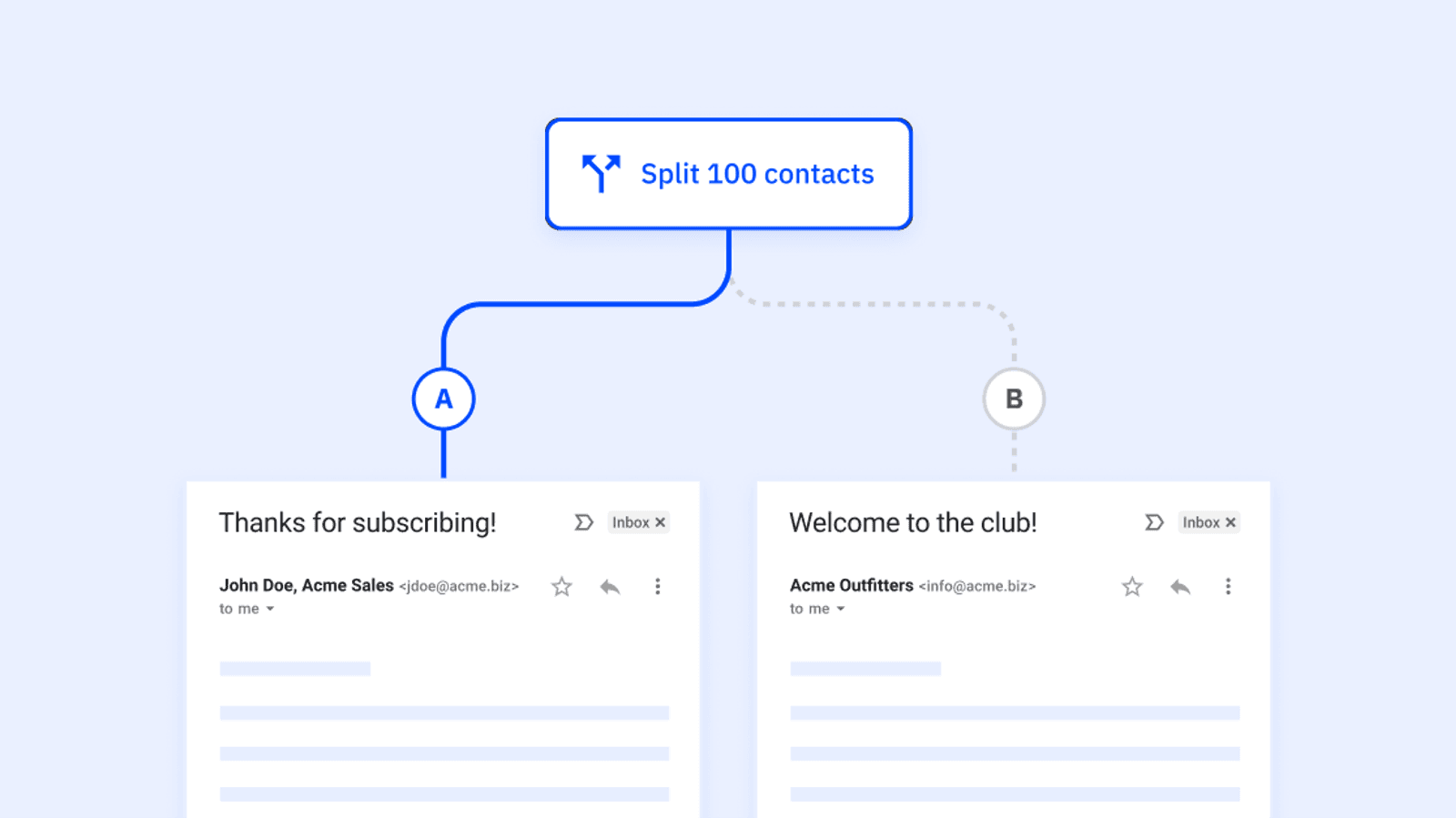“Who here likes talking to salespeople?”
David Priemer posed the question to a room of 200+ ActiveCampaign sales, customer success, and marketing team members.
Only one person raised their hand.
Even salespeople hate being sold to. Too often, we come across unconscious sellers who don’t know why their sales techniques work (or don’t) — or why they’re using those techniques at all.
The opposite of unconscious selling is cerebral selling, a term David coined to describe a more intentional approach to sales.
At ActiveCampaign’s 2020 go-to-market kickoff, David shared his expertise on cerebral selling. His presentation helped ActiveCampaigns’ sales and success teams understand why they sell the way they sell — and why it works (or doesn’t).
David also described 3 challenges facing today’s salespeople — and 3 cerebral selling tactics to help overcome those challenges.
In this post, we’ll share:
- 3 common sales challenges
- You don’t have your customers’ attention
- Customers care WAY more about their problems than your solutions
- You feel you’re bothering them
- How to sell the way you buy
- 3 techniques to overcome sales challenges
- Polarization
- Reciprocity
- Mindset
3 common sales challenges
Daniel H. Pink, author of To Sell is Human, asked people a question: “When I use the word ‘sales’ or ‘selling,’ what’s the first word that comes to mind?”
Here’s a word cloud of the results:
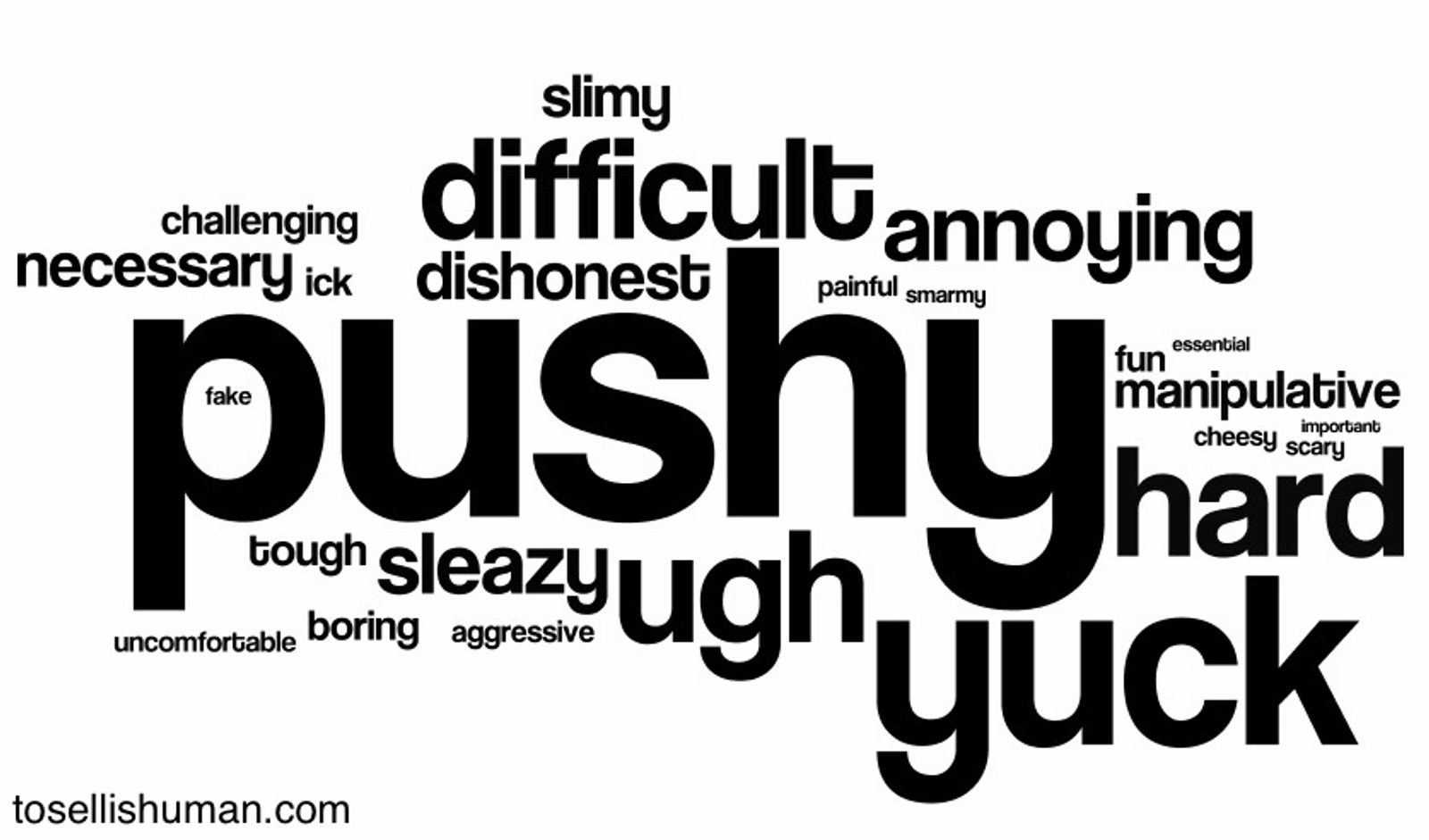
The size of the word in the word cloud represents how frequently that word appears in the responses. (Source)
Why do people have such negative associations with salespeople?
Close your eyes and picture the worst salesperson you can think of.
Chances are, you just pictured a used car salesman. (60% of people David works with do.)
That’s the type of salesperson people think of when they think of sales — but it’s an outdated mental image. Used car salesmen benefited from information asymmetry: They had all of the information on the product (the car), and the shopper had none.
Now, buyers have access to G2, Trustpilot, Google searches, TripAdvisor, Yelp… it’s almost impossible to make a purchase without background information. But people still have a bad taste in their mouths from the used car salesman approach to sales.
More information at customers’ fingertips combined with their lingering distrust of salespeople has created 3 challenges for salespeople:
- You don’t have your customers’ attention
- Customers care WAY more about their problems than your solutions
- You feel you’re bothering them
1. You don’t have your customers’ attention
Back in the day, salespeople cared about the competition. Who else is doing what we’re doing? How do we differentiate ourselves from them? Once you figured that out, people would choose you over a competitor.
Today, “you should be so lucky as to lose to a competitor,” David said. The real enemy isn’t the competitor — it’s getting people’s attention.
People are busy. We’re more distracted than ever before. Before you can beat out a competitor, you have to get people’s attention — which is hard to do.
In 2011, the marketing technology (martech) landscape looked like this:

In 2011, there were about 150 companies in the martech landscape. (Source)
Sure, 150 companies is a lot, but there were only a handful in each category. It was easier for companies to stand out and grab prospects’ attention.
Fast forward to 2019. The martech landscape looked like this:

There were over 7,000 companies in the 2019 martech landscape. (Source)
Many companies get lost in what David calls the “sea of sameness.” To people outside one of those 7,000 martech companies, they all look the same. After all, they all do the same thing, right? (And if they don’t, I don’t have time to learn about what makes them different.)
2. Customers care WAY more about their problems than your solutions
Customers care more about their problems — not only the ones in their businesses, but in their lives — than whatever solution you want to sell them.
People care more about what’s already on their mind than what you want to talk to them about.
When you approach a prospect and lead with a product-centric pitch, they become resistant. They shut down before you have a chance to explain why your solution will solve all their problems.
3. You feel you’re bothering them
When David led a region of small business sales at Salesforce, he had teams in Toronto, New York, and Atlanta. He noticed that the New York reps had the most activity — tons of phone calls, calling the right people — but no one in their pipeline.
To figure out why these reps had a hard time connecting with customers, David listened to recordings of their phone calls. Those reps sounded like they felt they were bothering their prospects.
They sounded afraid.
David began to think about experience asymmetry: when a younger, less experienced salesperson calls on a more senior-level decision-maker whose job they've never done. Most salespeople haven’t done the jobs of the people that they call.
Do we know what they care about? Do we know what's on their mind? Can we speak to them like peers?
That’s experience asymmetry. You hire younger, less experienced sales reps to call on more senior-level decision-makers, but those reps still have to be able to operate with that high level of conviction. To bust through the noise and convert those customers, you have to speak their language.
Sales organizations also need to be prescriptive, not responsive. Prescriptive selling is “a proactive, prescriptive approach that guides customers through decision making.”
In this study, Gartner found that a prescriptive sales approach leads to higher purchase ease and less post-purchase regret:
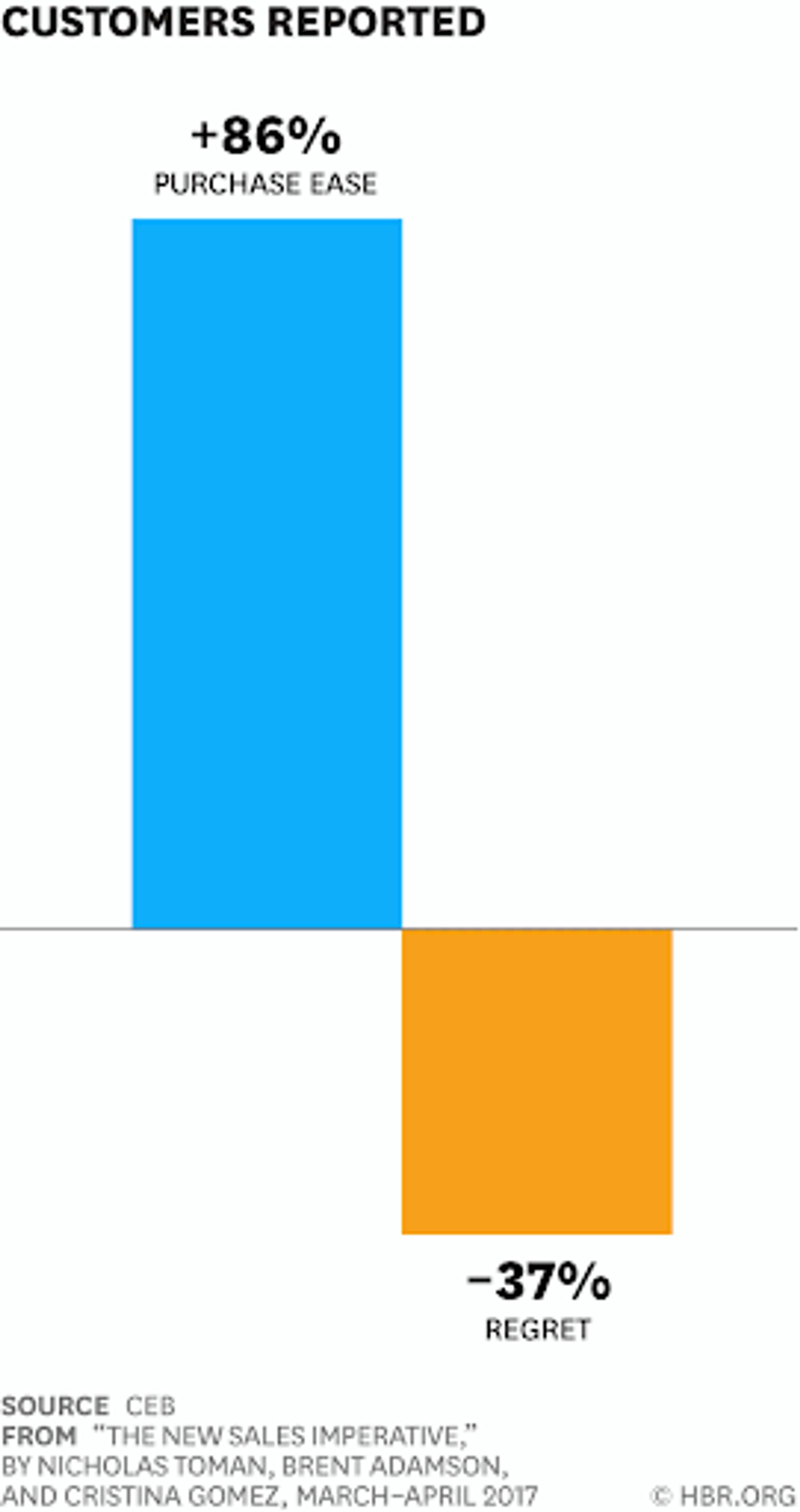
Prescriptive selling increases the likeliness of purchase ease and decreases the likeliness of purchase regret. (Source)
Imagine you go to a store to buy a sports jacket. There are hundreds of sports jackets, and you don't buy sports jackets every day. Instead of asking you, “can I help you?”, the salesperson asks, “How long do you plan to keep the sports jacket? Where do you plan to wear it?”
He comes back with just 3 sports jackets. “It’s one of these.” He makes it easy for you. You choose one, and he tells you “that fits you really well, and it’ll match everything you have.”
You don’t know whether or not he’s right.
But you buy the sports jacket — and you feel good about your decision. Because the suit store salesperson took a prescriptive approach.
How to sell the way you buy
After facing these challenges, David had an epiphany: Buyers and sellers are the same. We’re all people. We need to bring an element of empathy to the way we sell.
The solution: Sell the way you buy.
So… how do we buy?
We often fall into a fallacy of “I have a problem, so I’ll buy a solution.”
“I have a problem with engagements on my website, so I seek out software to get more engagements.”
“I'm hungry. I need to go get something to eat.”
But we don’t buy solutions. We buy feelings.
David calls this the solution-fit paradox. We don’t always buy the best things for us.
Salespeople are taught to sell value. What sales leaders mean when they say “sell value” is ”go out and talk about the business value of investing our solution.” People pay money for your solution — how much money will they make or save as a result? That’s their return on investment (ROI).
But value and ROI are not the same thing. ROI is an objective financial calculation: You make an investment, and here's the expected ROI. Value is a subjective feeling. People invest in things that they value.
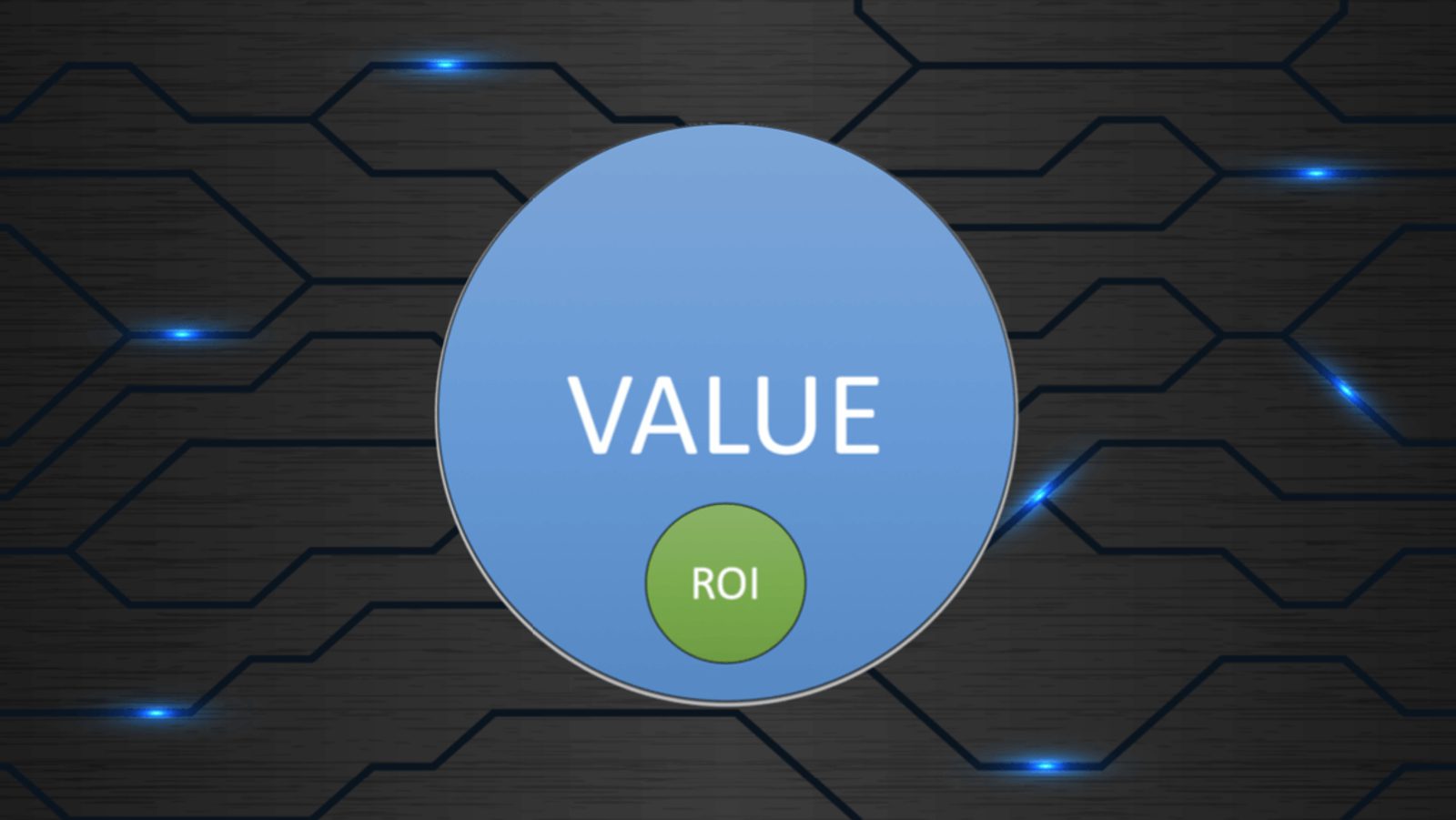
Value does not equal ROI. ROI is just one part of value. (Source: David Priemer)
If your solution has a strong ROI, it makes customers feel good about investing. But ROI alone is not sufficient is not enough to move them — because customers don’t choose vendors that only align with their tactical needs. Customers choose vendors who align with their strategic and emotional interests, too.
In the study “The New Science of Customer Emotions,” researchers looked at the emotional motivators that make people buy things.
Here are the top 10 emotional motivators they identified:
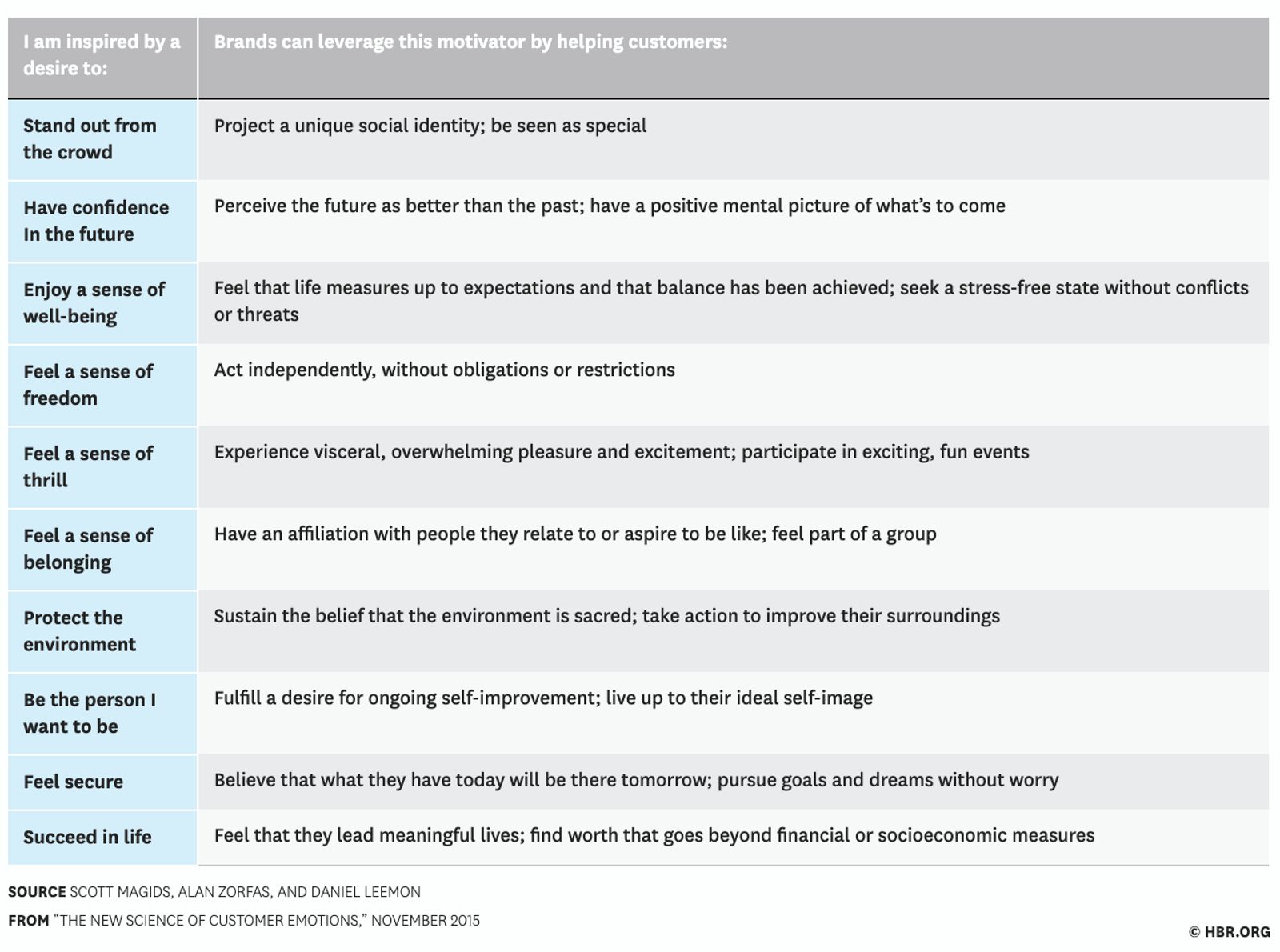
Salespeople can play into these emotional motivators by selling value, not just ROI. (Source)
These emotional motivators are often subconscious for buyers — but salespeople can sometimes detect them. In a 2018 report from Salesforce, salespeople were asked, “Which of these things have an extreme or substantial impact on your ability to convert a customer?”
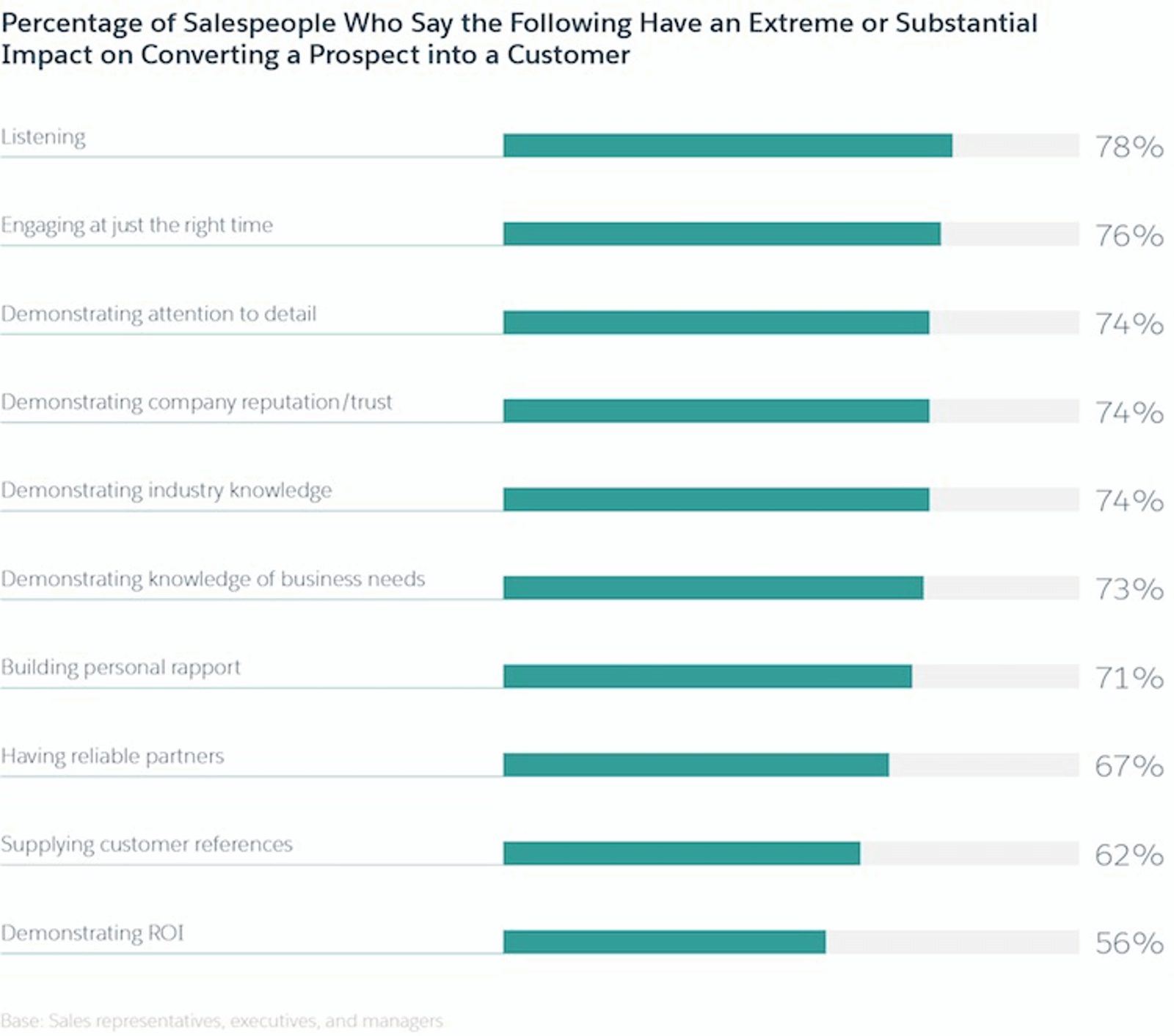
Demonstrating ROI is at the bottom of the list. (Source)
When you listen to someone, it makes them more likely to listen to you. If you don’t know where your customer is starting from, how can you move them forward? When you execute your sales strategy, make sure to do so from a place of empathy.
A lot of people think that being empathetic means not using any sales tactics — but empathetic doesn’t mean lazy. Empathy doesn’t mean giving up after the first few calls because you don’t want to bother your prospect. It takes more attempts than ever to connect with a buyer:
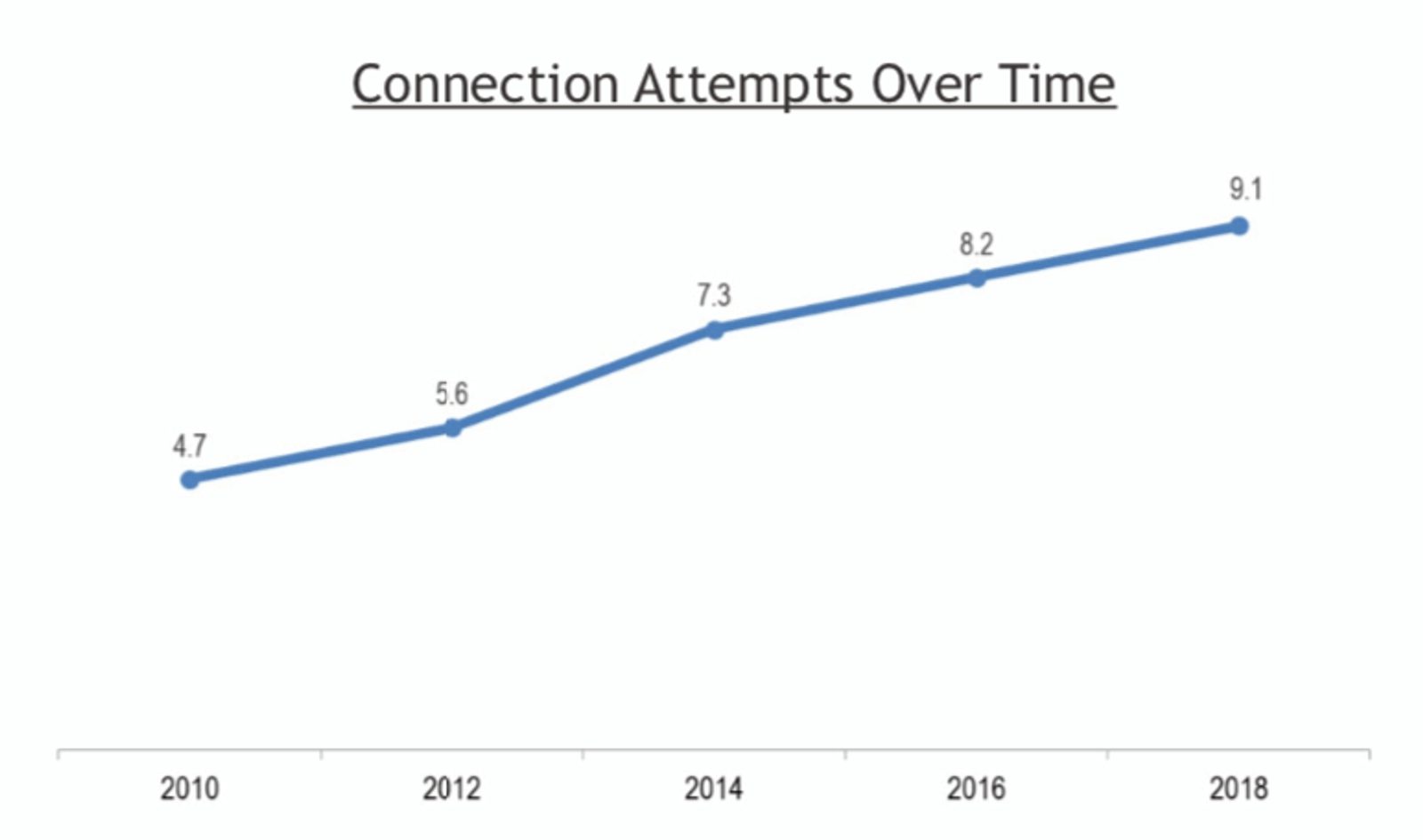
In 2018, it took an average of 9.1 attempts to connect with a prospect — compared to just 4.7 attempts in 2010. (Source)
As customers get harder and harder to connect with, salespeople need to practice empathetic persistence.
3 techniques to overcome sales challenges
Think back to the challenges David presented:
- You don’t have your customers’ attention
- Customers care WAY more about their problems than your solutions
- You feel you’re bothering them
How can you overcome these hurdles and start selling with empathy? David shared 3 cerebral selling techniques:
- Polarization
- Reciprocity
- Mindset
1. Polarization
Polarization is a messaging tactic you can use to describe what your company or product does. You say whatever you’re going to say, and then you let people decide whether they’re on your side — or the other person’s side.
When you make a polarizing statement, you can use speed as a weapon. David described it as “reaching into your customer’s mind” and pulling out what they’re thinking — then showing it to them. This produces an instant rush of emotion, and the customer forms an opinion before they have a chance to think it through.
“Whatever you say has to go in like armor-piercing bullets,” David said. “Because you have this much of their attention.”
David used to work for a feedback, coaching, and recognition platform. But “we’re a feedback, coaching, and recognition platform” wasn’t an armor-piercing message.
To figure out what customers valued, David’s team looked at what people were using instead of his platform — and why it didn’t work. In doing so, they discovered an enemy: The annual performance review.
Performance reviews are polarizing. Research showed that 80% of people use the word “hate” to describe performance reviews — but many HR leaders love them. Instead of “We’re a feedback coaching and recognition platform,” David’s team changed the messaging:
“Performance reviews don’t work. Meet the new way to encourage and empower your team!”
Figure out who your customer’s enemy is — then make that your enemy, too. This differentiates you from your competition and aligns you with your customers.
Things that make good enemies:
- Old, outdated processes and systems
- Wasted time, money, resources
- Fear and risk
- Lack of visibility
Things that make bad enemies:
- Competitors
If you talk about your competitors as enemies, you do 1 of 2 things:
- You elevate your competitors to your level
- You reduce yourself to their level
To create a polarizing message, use the words “love” and “hate” to describe what you do. In the example above, David’s company said, “People love feedback, but hate performance reviews.” “Love” and “hate” are emotionally charged words — use them to create a message that gets through to your customers.
2. Reciprocity
In the book Yes! 50 Scientifically Proven Ways to Be Persuasive, researchers Noah J. Goldstein, Steve J. Martin, and Robert Cialdini describe 50 different social experiments on persuasion.
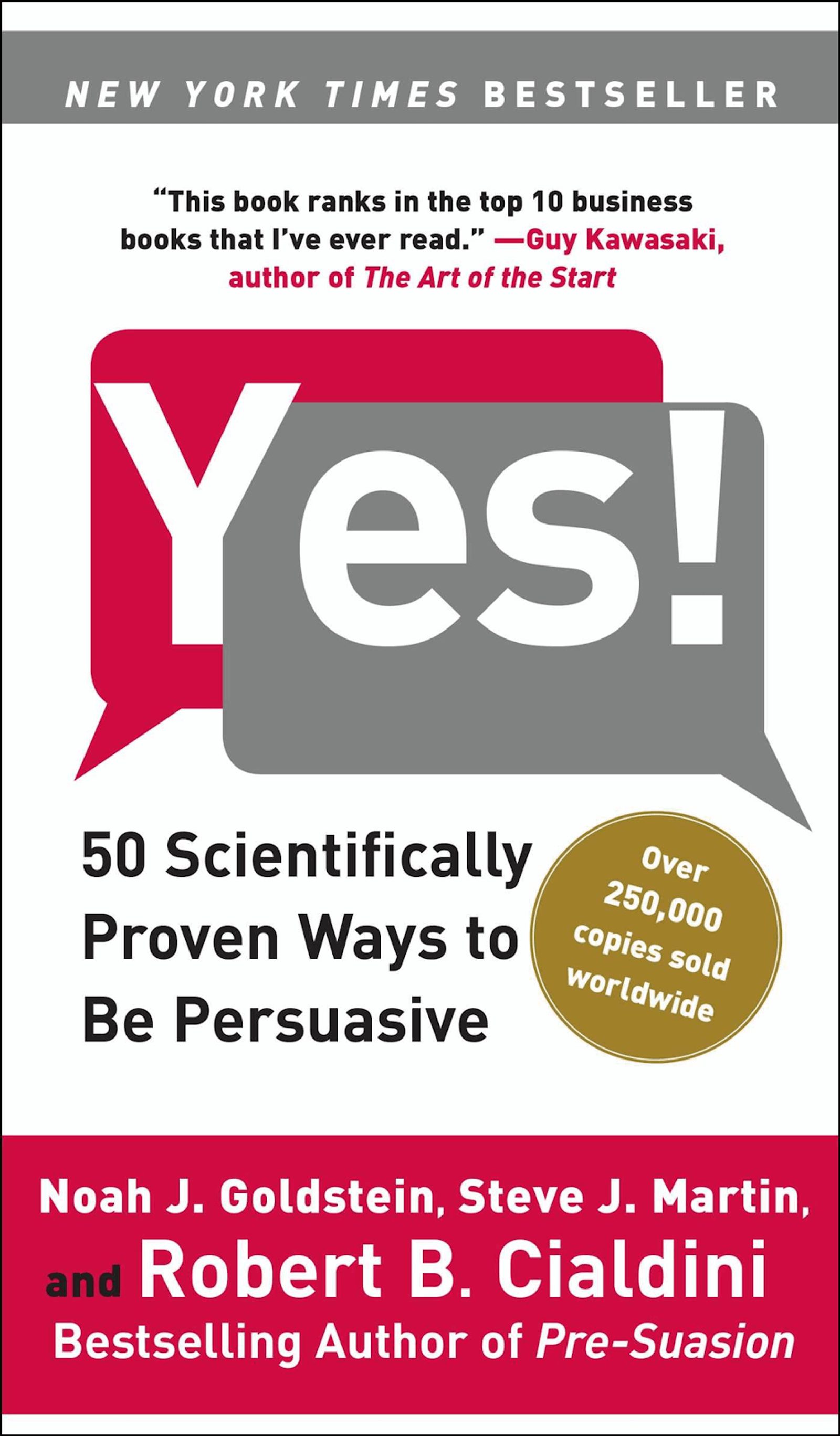
“Learn how small changes can make a big difference in your powers of persuasion.” (Source)
In one chapter, they talk about the goal of reciprocity with no strings attached.
A hotel did an experiment geared toward encouraging more guests to reuse their towels. They placed a card in each guest’s room asking them to recycle their towel because it’s good for the environment. They provided no incentive beyond goodwill. This card was their baseline for the experiment.
For the next iteration, they changed the card to say, “if you reuse your towel, we will make a donation to a not-for-profit environmental protection group.” But the percentage of people who recycled their towels remained nearly the same.
Finally, they changed the card to let guests know that a donation had already been made to the nonprofit, because the hotel knew that the guest would reuse their towel.
The number of people who reused their towels increased by 45%.
Why? Because of the order of the request. The hotel had already made the donation, so guests felt obligated to reciprocate.
How can you invoke the power of reciprocity when connecting with customers?
Look for ways to add unexpected value to them and their business:
- Share helpful resources (an article, video, book, etc.) — that aren’t from your own blog or website
- Engage them in your community through customer meetups (like ActiveCampaign study halls)
- Tell them something they don’t know about them. “I've taken a look at your website and your content. I think you have a tremendous opportunity to do X, Y, and Z.” Tailor your approach to the customer, and make it personal.
3. Mindset
To master cerebral selling, you need to focus on mindset — both your customer’s mindset and your own.
David calls confirmation bias the “silent killer in your discovery process.” When a salesperson goes into the sales interaction thinking and acting like that customer is going to buy something from them, that’s confirmation bias.
When you assume that a customer is going to buy from you, you’re more likely to come up against reactance. When you go into a store and a salesperson comes over, guns a-blazing, and asks “Can I help you?” you immediately push back. “No, I’m just looking.”
The same thing happens when you ask a customer, “does that make sense?” They either think you’re doubting their ability to understand, or you’re doubting your own pitch.
Tactics like “can I help you?” and “does that make sense?” are drilled into salespeople’s minds, but they’re scientifically proven to turn customers off. Reactance happens when people feel that their ability to choose freely is being restricted.
Instead, give people space to say no.
In an experiment at a Paris pedestrian mall, a busker asked people for 50 cents for bus fare. Researchers measured the rate of compliance, then they changed the experiment: they gave people the option to say no. “Excuse me, sir, do you have 50 cents for bus fare? And if the answer is no, that's okay.”
When they gave people permission to say no, the compliance rate increased by 400%.
You can use this same technique on a sales call: “Our product isn’t for everyone. It’s for people who meet A, B, or C criteria. If I can learn a bit more about how you do these things, I'll be able to tell you if it’s a good fit. And if at the end of the day, this isn't a fit, I don't want you to buy this. It’s okay if it’s not for you.”
Another important piece of mindset is customer comfort. On a sales call, you have to ask a lot of questions — and when you ask a contentious question, customers want to know why you’re asking. The fix? Add “the reason I ask is because…” to the end of the contentious question.
If you ask a customer about budget, they might get defensive. When you explain why you need that information, it can help bring their guard down. David shared these examples from his own sales calls:
“What's your budget for this program? The reason I ask is because some of the companies I work with don't have a budget. And this is something that maybe I can help you create in your organization.”
“What’s your budget? The reason I ask is because we’re not for everyone, and I want to be totally upfront about how much we charge.”
Finally, David recommended using questions to drive commitment.
In 1997, a New York restaurant was struggling with no-shows. If someone made a reservation but didn’t show up, the restaurant lost money. When a diner called to make a reservation, the host said, “please call us if you change your plans” — and still saw a 30% no-show rate.
They decided to change that statement to a question: “Will you call us if you change your plans?”
Why does asking a question help drive commitment? Cognitive dissonance. People like to behave in a way that’s consistent with their stated opinions. When someone said “yes” to the restaurant host’s request, they committed to calling if their plans changed. Now, they identify as someone who calls when their plans change — and cognitive dissonance makes sure that they call.
In sales, David recommends you ask customers, “If, at any point, you feel that this is not for you, will you tell me? I don't want you to spend money on something that's not a good fit for you.” When the customer agrees, they become more likely to get back to you more quickly.
Conclusion: Cerebral selling to connect with customers
Salespeople face 3 major challenges:
1. You don't have people’s attention. People are busy focusing on other things, and there are a million solutions in the market.
2. People think about their problems all the time — and they don’t care enough about your solutions. The more you can talk about their problems, the more that they will see you as someone who can help them solve those problems.
3. You feel like you’re bothering your prospects. But if you focus on the promise that we can alleviate their problems, use polarizing statements, and muster conviction, you can overcome that feeling. They’ll hear the excitement in your voice and your ability to help them — and that excitement will be contagious.
David shared 3 cerebral selling tactics to overcome those challenges — polarization, reciprocity, and mindset — but you don’t have to implement them all at once. Instead, focus on one tactic and begin to consciously include it in your sales process. That’s the first step to cerebral selling.
For more resources on cerebral selling, visit David’s website.





